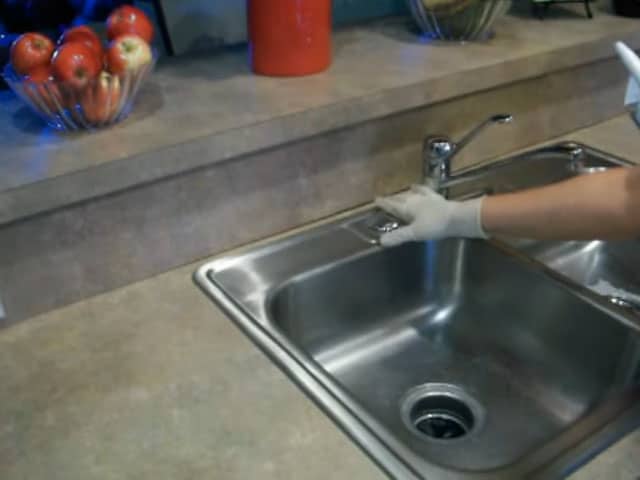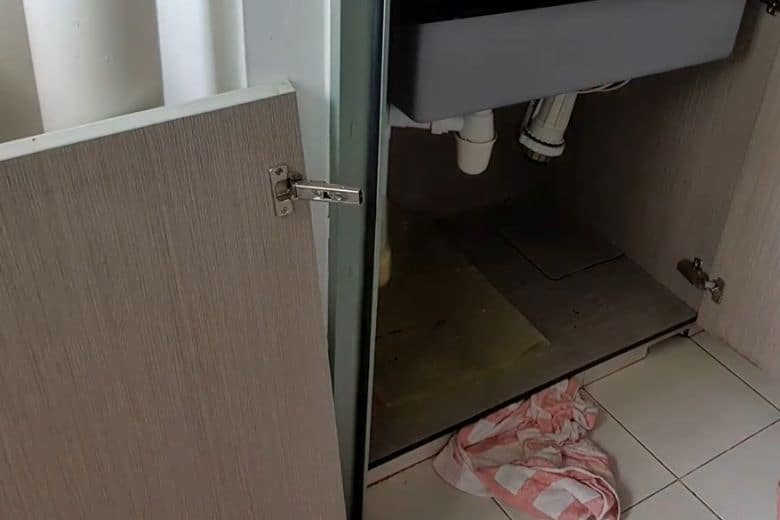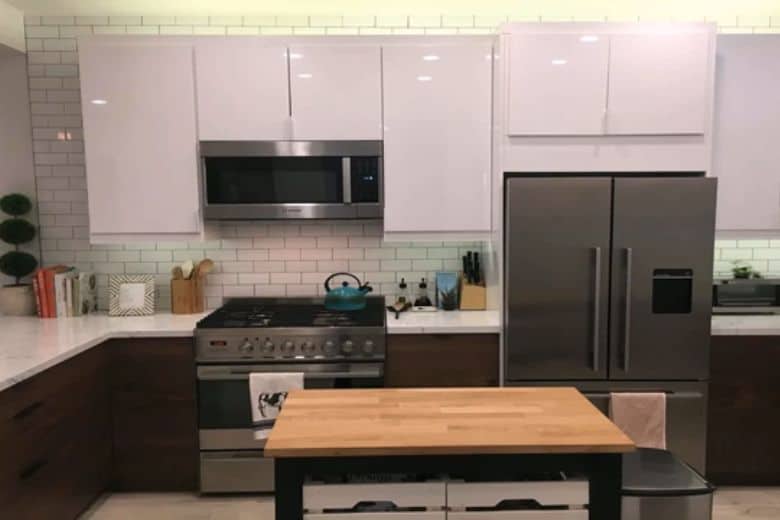Proper alignment of the kitchen sink and countertop is essential for a seamless and appealing look to your kitchen. Not only does this create an attractive aesthetic, but it is also a critical factor in any sink and countertop setup.
If you fail to do so, many complications may appear, and one of them is the gap between the countertop and the sink. This gap can cause debris and residues to accumulate, making the sink look unpleasant. Additionally, it can weaken the connection between the two. Thus, it is essential to fix the gap.
Now the concern this how to fix the gap between sink and countertop? Also, what is the ideal alignment of the sink and countertop?
Generally, the sink and countertop need to install without any gap or overhang. However, incorrect installation can sometimes cause a gap between the two parts. To solve this, you can use caulk, plumbing tape, redo the installation, etc. These methods can help fix the gap between the two sections.
The Ideal Gap between Sink and Countertop::
Specifically, there should be no gap between the kitchen sink and the countertop. Any gap between the sink and the countertop clearly indicates an incorrect installation. Therefore, it’s crucial to pay close attention to the alignment during the installation process to avoid any issues.
Three possible conditions can occur when mounting a sink and countertop:
- A slight rim may be visible on the sink where it connects with the countertop, which some plumbers call a “positive reveal.”
- Secondly, it’s also possible for the countertop to overhang the sink in the setup, which is sometimes referred to as a “negative reveal” by plumbers.
- In the last scenario, you will notice that the sink and countertop are perfectly aligned. There will be no overlap or excess of the sink rim, as it fits precisely with the countertop. This is the optimal alignment for the sink and countertop, as there will be no gaps between the two.
What Occurs If there’s a gap between the Sink and Countertop
Gaps between the sink and countertop should be avoided at any cost. But why is this so serious? Let’s take a closer look at what happens when there is a gap between the sink and the countertop.
- A gap between the sink and countertop can make the entire sink setup look unattractive. Not only can it be unpleasant to work with, but it also creates an eyesore that can detract from the kitchen’s overall aesthetic.
- In addition, debris and dirt can accumulate in the gap between the sink and countertop, which can be challenging to clean. This can lead to unsanitary conditions and foul odors.
- Moreover, the presence of a gap between the sink and countertop can weaken the connection and reduce the lifespan of the entire sink setup. For this reason, it’s urgent to ensure no gaps between the sink and countertop during installation.
- Lastly, a gap between the sink and countertop can create problems with the plumbing beneath the sink, potentially leading to leaks or other issues. This can be costly to repair and cause damage to the surrounding areas.
However, a gap may develop between the sink and countertop for various reasons, most commonly due to improper installation or poor sealing. Fortunately, it is possible to quickly and easily fix this gap to prevent further damage or deterioration of the sink setup.
How to Fix Gap between Sink and Countertop (4 Distinctive Method to Follow)
We understand that you’re here because you have a gap in your sink setup and are looking to fix it. Without delay, let’s get started on how to address this issue.
Method 1: Use caulk to fill the gap between sink and countertop
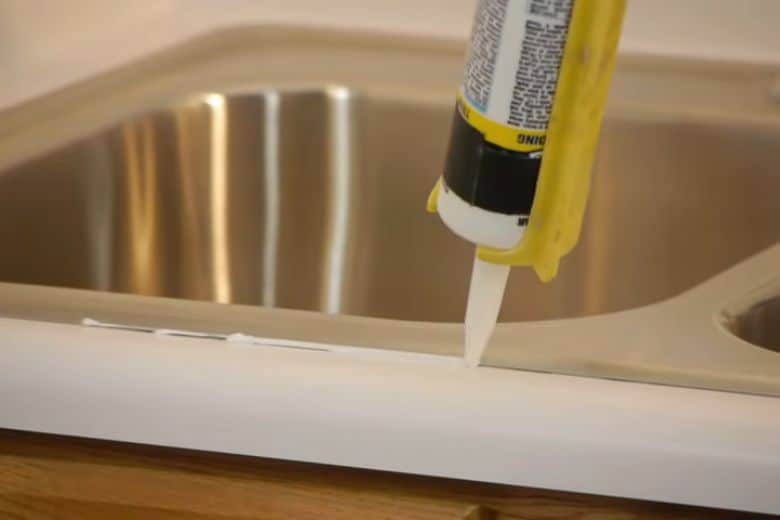
Caulk is an incredibly convenient and cost-effective way of fixing plumbing gaps. It’s simple to find and easy to use, making it an ideal solution for any plumbing-related issue.
In most cases, you’ll find a small gap between the countertop and sink which will only allow for an airtight seal. You can quickly fix this with caulk. However, if the gap is too large, caulk won’t be able to fill it.
To start, check if any old caulk is present at the connection point. It will need to be removed before applying the new caulk. A putty knife or utility knife is enough to gently scrape away the weakened caulk. Once the old caulk has been removed, the area should be cleaned to remove any debris or residue. This will help ensure that the new caulk adheres appropriately to the gap.
Once the area has been cleaned, and all old caulk has been removed, allow it to dry completely. Next, apply new caulk to the gap and seal it with a suitable sink sealant. These materials can be purchased from a hardware or plumbing store.
To ensure that the caulk and sealant penetrate the gap thoroughly, use your finger or a spoon to apply gentle pressure and smooth the caulk. This will help the materials to reach deep into the hole instead of just sitting on the surface. Additionally, filing the caulk will improve the appearance of the gap and create a more even finish.
Note to Remember:
Caulk is suitable for fixing gaps that are less than ¼ inches wide. If the gap is more expansive than that, caulk may not be able to hold it effectively. Some plumbers suggest that caulk can be used for openings up to ½ inches wide, but it may not provide a strong and durable fix.
Method 2: Apply epoxy to fill the gap between a sink and countertop
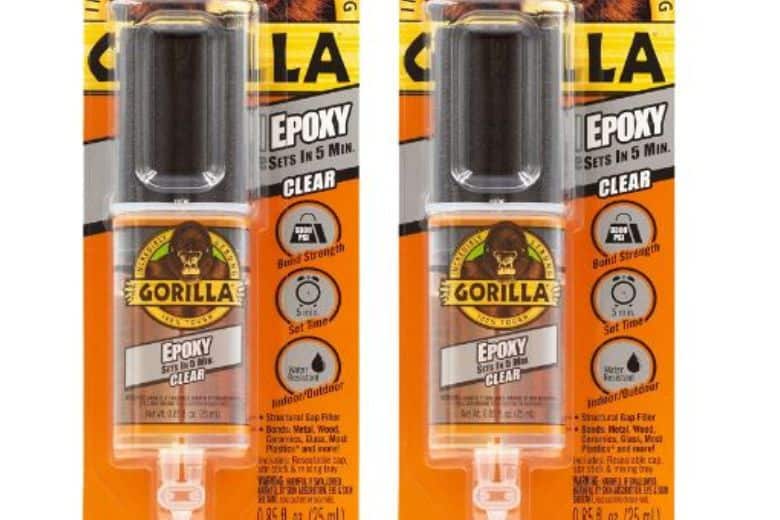
Here are the steps to follow when applying epoxy to fill the gap between a sink and countertop, which is a simple and effective way to seal and protect the area from water damage:
Prepare the area: Clean the gap thoroughly to remove debris, dust, or old caulking. Dry the space entirely to ensure good adhesion.
Choose the epoxy: Select a two-part epoxy that is safe for use on sinks and countertops. Make sure to follow the manufacturer’s instructions for mixing and application.
Apply the epoxy: Squeeze the epoxy into the gap using a caulking gun or a putty knife. Next, be sure to fill the gap completely, but avoid overfilling to prevent excess from seeping out. Smooth the epoxy surface using a putty knife or a damp finger.
Let it cure: Let the epoxy fix according to the manufacturer’s instructions. This can take several hours or overnight, depending on the product used. Do not disturb the epoxy during the curing process.
Sand and finish: Once the epoxy is used, take a fine-grit sandpaper to smooth out any rough edges or excess material. Then wipe away any dust or debris with a damp cloth. Finally, apply a sealant or finishing coat to protect the area from future damage.
Note to Remember:
When filling the gap between a sink and countertop with epoxy. The key steps you need to follow are to prepare the area, choose the suitable epoxy, apply, let it cure, and sand and finish.
Method 3: Use a magnetic strip
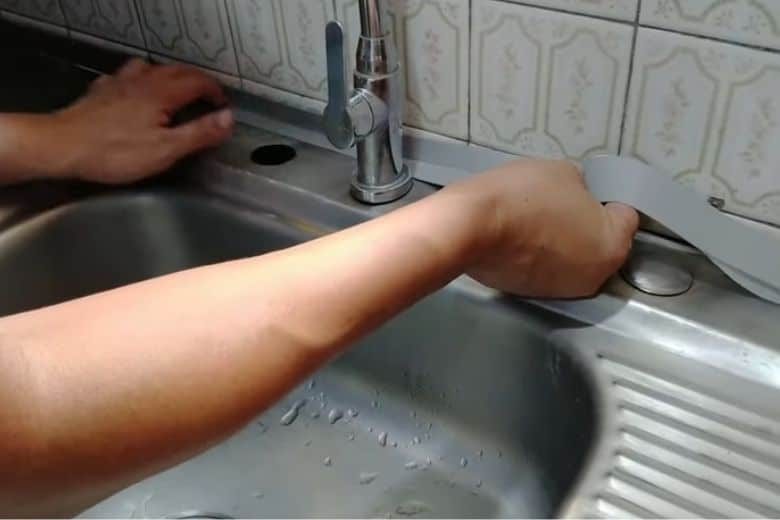
Follow the mention steps to fill the gap between a sink and countertop using a magnetic strip as another method to seal and protect the area from water damage:
Purchase a magnetic strip: Look for a flexible magnetic strip that is wide enough to cover the gap between the sink and the countertop. You can find these at most hardware or home improvement stores.
Clean the gap: Clean the gap thoroughly to remove any debris, dust, or old caulking. Dry the area ultimately to ensure good adhesion.
Cut the magnetic strip: Measure the length of the gap between the sink and countertop, and cut the magnetic strip to fit. Make sure to cut the strip slightly longer than the hole to allow for some flexibility.
Apply the magnetic strip: Peel the adhesive backing off the magnetic strip and carefully press it into place along the gap between the sink and countertop. Make sure the strip is firmly attached and covers the entire opening.
Adjust the fit: If necessary, adjust the fit of the magnetic strip by trimming any excess with a pair of scissors. Test the ribbon to ensure it is securely in place and seal the gap completely.
Note to Remember:
The key steps of using a magnetic strip to fill the gap between a sink and countertop. First, purchase a magnetic strip, clean the hole, cut the strip to fit, apply it, and adjust the fit. Keep in mind that while this method is a quick and easy solution, it may not be as durable as other sealing options and may need to be replaced periodically.
Method 4: Reinstall the countertop and sink
When the gap between the sink and countertop is too large to be fixed with caulk, magnetic strip, or other solutions, the countertop may need to be remounted to seal it.
However, if the countertop is made of an expensive material like marble, you might be hesitant to take this step. Firstly, the reinstallation of a marble countertop is a considerable undertaking. Secondly, attempting to redo the marble countertop might harm the surface, which you undoubtedly want to avoid.
Reinstalling an inexpensive countertop is an option if you have a gap between the sink and the countertop. You don’t need to replace the entire countertop. Remove the sealing and adjust the countertop to cover the gap as much as possible. This method is suitable for stainless steel or wooden countertops that are easy to remove and modify.
By the way, replacing a concrete countertop is a more challenging process. In such cases, it is recommended to hire a professional construction worker or plumber to do the job. When replacing the section, it is crucial to ensure that the new cut-out has the correct length to avoid creating additional gaps. You can use a measuring tape to accurately measure the countertop’s height and width.
Note to Remember:
Reinstalling the countertop and sink can be a solution for sealing significant gaps between them. This method involves removing the countertop, adjusting it to block the gap, and reinstalling it. It is essential to take precautions during the process, such as turning off the water supply, using the right tools, and making accurate measurements. However, this method may only be suitable for some countertops, such as expensive materials like marble or concrete, which may require professional help.
Frequently Asked Questions:
Is it normal to have a small gap between the sink and the countertop?
Answer: Yes, it is normal to have a small gap between the sink and countertop. Gaps up to ¼ inches are acceptable, as you can fix them using caulks.
How does grout differ from caulk?
Answer: Grout fills the gaps between tiles and holds them securely, while the caulk is used to seal gaps and cracks to prevent water or air from passing through.
What type of caulk should you use to seal around a sink?
Answer: The caulk you use to seal around a sink depends on the sink’s material and countertop. For stainless steel or metal kitchen sinks, silicone-based caulks work well. For porcelain sinks, latex-based caulks are recommended.
Is epoxy safe to fill the gap between the kitchen sink and countertop?
Answer: Yes, epoxy can be a safe and effective material to fill the gap between a kitchen sink and a countertop. Epoxy is a strong adhesive that can bond well with various ceramic, stone, and metal materials.
When properly applied, epoxy can create a watertight seal that helps to prevent water from leaking into the area beneath the sink. However, choosing an epoxy specifically designed for use with kitchen and bathroom fixtures is essential, and following the manufacturer’s instructions carefully ensures safe and effective service.
Conclusion
Repairing the small gaps between the sink and countertop is a simple process that can be done using caulk, magnetic strips, and epoxy. However, remounting the countertop may be necessary if the gap is significant, which can be expensive. Therefore, ensuring proper sink and countertop installation is crucial to avoid such issues.
Paul Newman is a blogger who writes about plumbing and home improvement. Over the past 20 years, I have worked as a plumber. My passion is to share my knowledge and experience with others to improve their homes.

